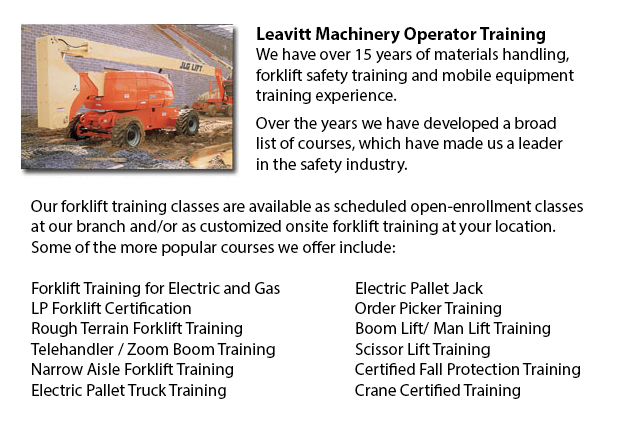
Kelowna Aerial Lift Certification - Aerial Lift Certification is for those who need an in-depth understanding of aerial lift safety. Inspectors and operators, maintenance workers, construction craftsmen and supervisors need to perform a training and certificate program. State, federal and provincial rules need businesses to be certified to be able to do in-house aerial lift checks.
The majority of workers who are needed to work at elevated level will usually use the same means to get to these desired heights, regardless of the kind of work that must be performed. Aerial lifts and scissor lifts are the mechanized machines used in order to lift equipment and workers to elevated sites.
Bucket trucks called Cherry Pickers are aerial platforms that feature a bucket and supported boom. The primary hazard to making use of this particular type of platform is usually falls, electrocutions, and tip overs. Certification makes certain that workers who make use of aerial lifts are correctly trained to safely operate the equipment. Training likewise ensures that workers know how to maintain aerial work platforms in accordance with the manufacturer's instructions.
Aerial lift training certification programs would cover the following: Aerial lifts that are mounted to vehicles, Boom-supported aerial lifts and scissors lifts. Trainees would know about safe operating procedures and would gain an understanding about the hazards which often lead to aerial lift incidents. They will become technically competent in the different kinds of aerial lifts, in addition to parts and terms. From selecting the right aerial lift for the task to interpreting rated capacity charts, the certification program would provide employees with all that they need to know in order to safely perform their work.
Inspectors and supervisors who have the task to check aerial lift devices need to know how to check booms, gears, operating mechanisms, structural components, control systems and functions, power plants, braking systems, attachments, pins and shafts, electric and pneumatic parts, hydraulic, emergency safety devices and operator aids, and so on. Training will include the following: the role of the inspector in lessening liability exposure and accidents; annual and monthly check; how to perform a pre-use; how to apply and interpret regulations about aerial lift safety standards; how to write inspection reports; inspection procedures, techniques and checklists; applying and understanding the three levels of aerial lift inspection; complying with record keeping requirements; and when to remove defective aerial lifts from service.
-
Kelowna Forklift Training Program
Kelowna Forklift Training Program - The lift truck is a common powered industrial vehicle which is in wide use these days. They are sometimes called hi los, lift trucks or jitneys. A departments store would use the forklift to unload and load merchan... More -
Kelowna Crane License
Kelowna Crane License - Crane operators ought to be "credentialed", that means they ought to have a crane operator certification or license. Credentialing is considered a mandatory governmental requirement in order to practice as an operator of a cra... More -
Kelowna Boom Lift Safety Training
Kelowna Boom Lift Safey Training - Boom lifts fall under the type of elevated work platform or aerial lifting device. Most usually used in warehousing, construction and industry; the boom lift is so versatile that it could be utilized in almost whate... More -
Kelowna Loader Training
Kelowna Loader Training - Loader Training - Any individual who would like to operate a forklift should take a Loader Training course in order to become a certified forklift truck operator. There are a variety of ways to obtain forklift training. Cour... More -
Kelowna Aerial Lift Safety Training
Kelowna Aerial Lift Safety Training - Each and every year, there are roughly 26 construction deaths attributed to the use of aerial lifts. Most of the craftsmen killed are electrical workers, laborers, painters, ironworkers or carpenters. The majorit... More -
Kelowna Crane Ticket
Kelowna Crane Ticket - Modern cranes can either be simple or complex, based upon the nature of the application they can carry out. For example, mobile cranes are somewhat simple units. A telescopic boom and even a steel truss mounts its movable platf... More -
Kelowna Boom Lift Operator Training
Kelowna Boom Lift Operator Training - The cherry picker work platform is a type of work platform, that will typically have a bucket or platform at the end of a hydraulic lifting system. The machine is likewise referred to as a man lift, boom lift, hy... More -
Kelowna Heavy Equipment Ticket
Kelowna Heavy Equipment Ticket - Depending on the nature of the job at hand, the kind of construction equipment that a heavy equipment operator makes use of differs. Every kind of machine is made to perform particular tasks in the most effective mann... More

Leavitt Operator Training
TOLL FREE: 1-888-254-6157
101-864 McCurdy Place
Kelowna, British Columbia
forkliftcertificationkelowna.com
Email Us
About Us


